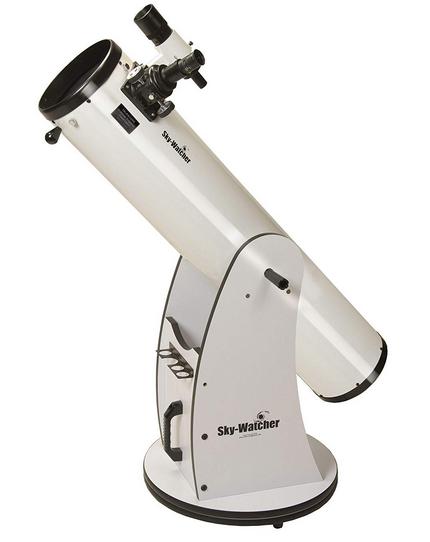So you’re considering buying a telescope and the internet is awash with advice. So what can we add?
The key advice is to not buy immediately. Try to look through a variety of telescopes up at the sky before you buy and talk to their owners. If price is your only criteria, you’ll probably end up disappointed. You can look through different telescopes easily by going to a public stargazing event or joining a local astronomical society and going on an observing night. To make the best of such evenings, all you need is a pair of 10×50 binoculars and your curiosity.
You can pick up a cheap pair of 10×50 binoculars from various sources. Millets no longer do their cheap pair. So you may be best served by secondhand binoculars from Gumtree or Ebay. If you’ll have another use, such as bird-watching, then splash out £50-£150 for a good pair. Else you can get an ok used pair for £15.

Small, cheap telescopes (less than £150) tend to be very poor value for money as the view through them is limited, often coloured or distorted, and the view wobbly due to flimsy tripods. They also don’t retain their value so resale value is low. On a number of low to mid range telescopes, the main scope is ok but the finderscopes on the side are abysmal. This means you’ll spend ages trying to locate objects in the sky which means frustration and wasted viewing time. If the finder isn’t solidly mounted, wobble free and staying in the same position you set it, then you’re doomed to potentially fruitless hunting at the eyepiece of the main scope. Upgrading finderscopes is one of the most common things to change when you buy a telescope for this very reason.
If you have space to store it and can confortably lift 10kgs then we’d recommend the Skywatcher Skyliner 150P and preferably 200P. These are Newtonian reflecting telescopes on a Dobsonian mount costing between £219 and £289. These push me-pull you telescopes are quick to set up and simple to use. You’ll need to learn your way around the sky but then that’s part of the fun.
If you wish to be more “astro tourist” and SatNav than learning your way around then a small to medium sized computerised telescope is a lighter, more compact but pricier option (3 times more for the same view). The most compact versions are Maksutovs and Schmidt Cassegrains comprising both lenses and mirrors. A Celestron Nexstar 130SLT will show you around the sky for less than £400 but you’d need to spend £650 on a Nexstar 6 SLT to get a similar light capture as the Skyliner 150P above (£219).
The telescopes are all usually supplied with a low power lens (x40) and a high power one (x200) as well as a Barlow to multiple magnification (by 2 or higher). To keep telescopes cheap, these components are not usually of the best quality and so you can get more out of your telescope by buying additional/replacement lenses which give give clearer, sharper views or allow more comfortable viewing for those wearing glasses. Again, this is one for experiencing in the field rather than in a shop/on a website. Ask if you can use your lens in someone else’s telescope at a stargazing session and see the difference compared with the lenses others use. You can pay a great deal for a lens so you need to be sure your eyes can appreciate the difference.
You can see a map of telescope retailers here
